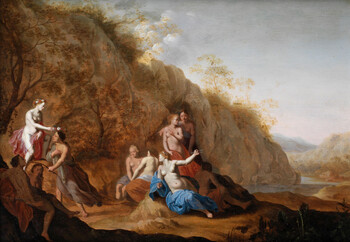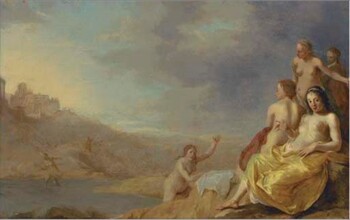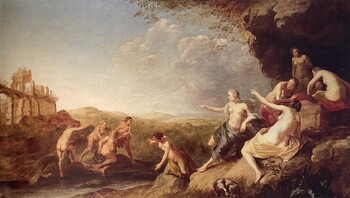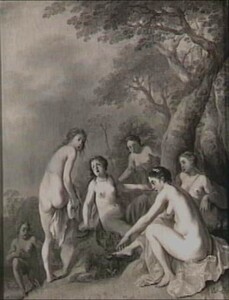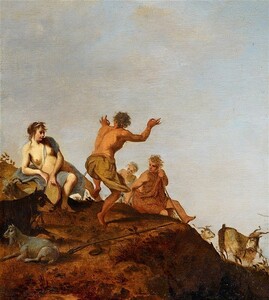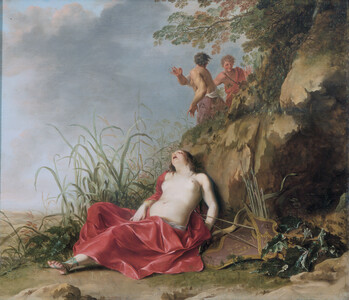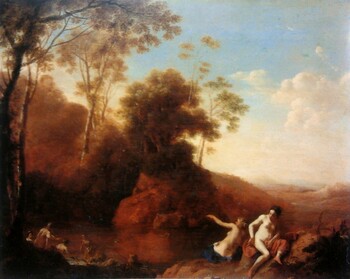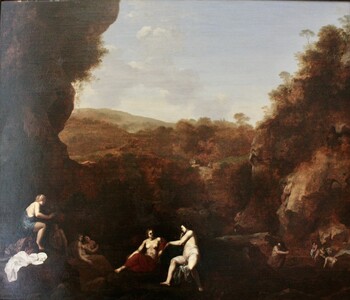5.300 €
Figures in an Arcadian landscape
Oil on panel : 31,7 X 42,2 cm
Unsigned
Frame : 48,8 X 61,6 cm
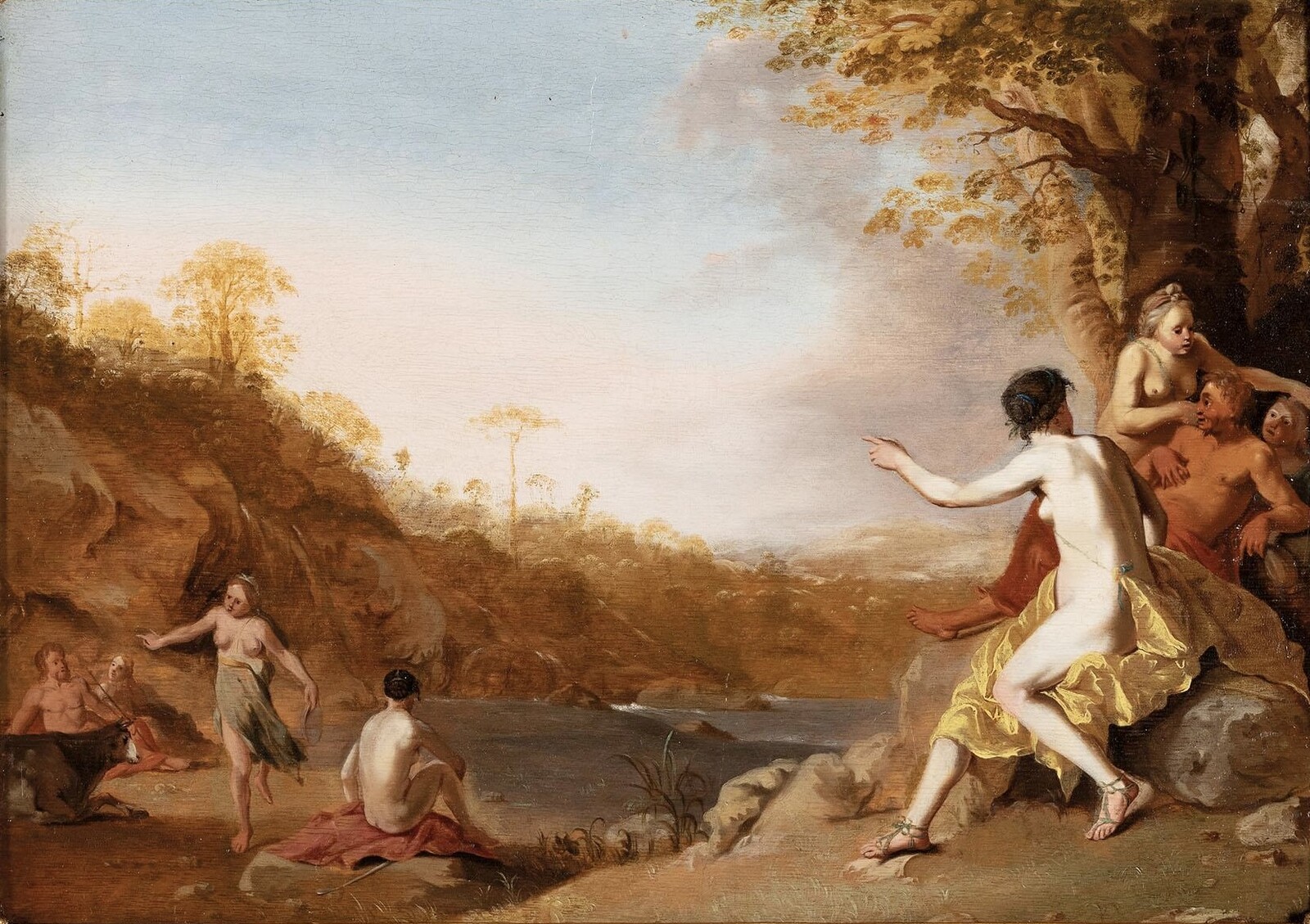
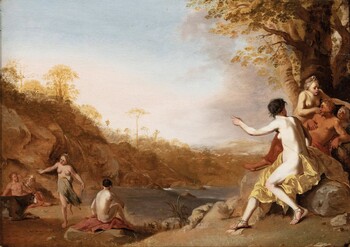
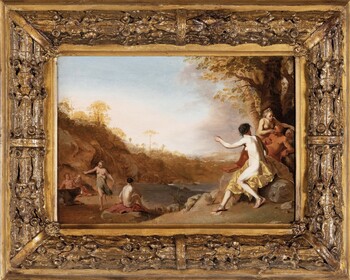
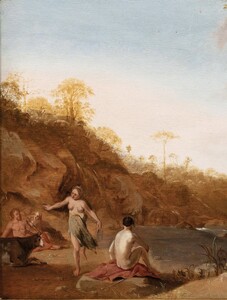
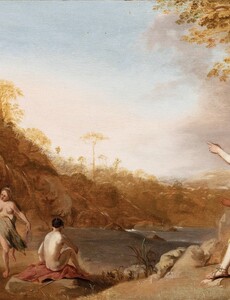
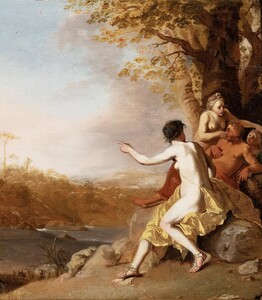
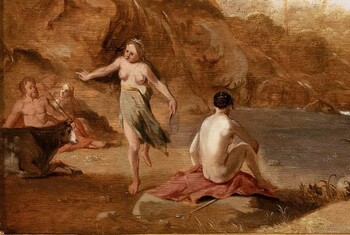
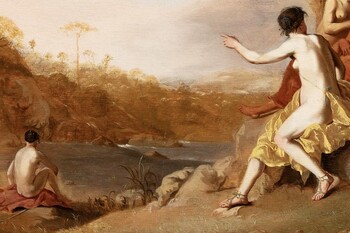
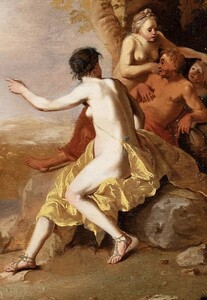
In short
Dirck van der Lisse studied painting in Utrecht under Cornelis van Poelenburgh, who was a highly influential painter of these small myhological scenes. Van der Lisse settled in 1644 permanently in his birthplace The Hague, where he was to be mayor several times.
Arcadia was in Antiquity considered a place of unspoiled, harmonious pastoral life. And it kept this meaning in Western art.
About Dirck van der Lisse
Dutch painter
The Hague 1607 – 1669 The Hague
Painter of so-called cabinet paintings: highly detailed, small mythological, Arcadian and religious scenes that were often set in an Italianate landscape. He also turned to portrait painting towards the end of his life.
Pupil of Cornelis van Poelenburch (1594/95 – 1667) since 1626. He was an important painter of mythological scenes, who had a large influence, not only on his pupils (Jan van Haensbergen, Dirck van der Lisse and Daniel Vertangen), but on many others, such as Bartholomeus Breenbergh, Abraham van Cuylenborch, Charles de Hooch and Moyses van Uyttenbrouck. Actually his influence lasted well into the 18th century.
Van der Lisse is recorded in Delft in 1625/26. He moved to Utrecht in 1626 where he studied under van Poelenburch. During the second half of the 1630s he lived alternately in Utrecht and in The Hague. In 1642 he moved to Amsterdam, but settled permanently in The Hague in 1644, joining the local Painter’s Guild in that same year.
Van der Lisse played an important role in The Hague, both social (as churchwarden of the Groote Kerk and as governor of an almshouse) and political (during the last ten years of his life he was designated several times mayor. In 1656 he was also one of the founding member of Confrerie Pictura.
About Arcadia
Arcadia refers to a vision of pastoralism and harmony with nature. It is derived from the Greek province of the same name, dating from antiquity. The province's mountainous topography and sparse population of shepherds later caused the word ‘Arcadia’ to develop into a poetic byword for an idyllic vision of an unspoiled, Mediterranean wilderness, uncorrupted by civilization. It was regarded as unattainable or as a lost.
Arcadia became an idealised phantasy dreamland in poetry. Best known are:
- the popular pastoral tragicomedy “il pastor fido” by Battista Guarini (1590);
- the translation in Dutch by Karel van Mander of the “Bucolics” of the Roman poet Virgil (1597);
- the famous play “Granida” by Pieter Cornelisz. Hooft (1605).
In France Claude le Lorrain and Nicolas Poussin are its best known Baroque painters, so-called ‘Classicists’. In Holland, thanks to van Poelenburch and his pupils and followers, Utrecht was the centre of Arcadian painting.
In painting Arcadian scenes are characterised by an Italianate landscape (hills bathing in a warm sunlight) populated with nude or scarcely dressed figures.
Why should you buy our painting?
Because it holds a great female nude at right.
Comparative paintings
Click photos for more details

